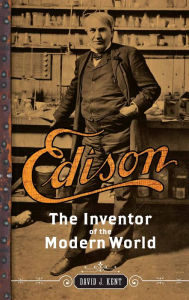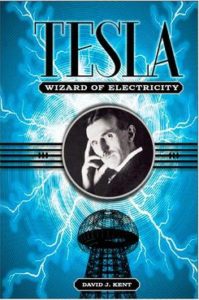“Nature has provided an abundant supply of energy in various forms which might be utilized if proper means and ways can be devised.” – Nikola Tesla
 One of Nikola Tesla’s first professional forays into the power of nature was the development of hydroelectric power at Niagara Falls. The idea of exploiting flowing water to convert potential energy to kinetic energy to mechanical energy has been around for centuries, but during the 1800s it was combined with the new developments in electricity as a means to generate electrical power.
One of Nikola Tesla’s first professional forays into the power of nature was the development of hydroelectric power at Niagara Falls. The idea of exploiting flowing water to convert potential energy to kinetic energy to mechanical energy has been around for centuries, but during the 1800s it was combined with the new developments in electricity as a means to generate electrical power.
The very first use of hydropower to generate electricity occurred in England in 1870. William George Armstrong created a series of artificial lakes at his estate, Cragside, which allowed him to power small incandescent lamps. By 1880, development of a brush arc light dynamo driven by a water turbine provided for the first use of hydroelectric power in the United States, lighting theater and storefronts in Grand Rapids, Michigan.
The world’s first actual hydroelectric plant was small in scale and began operation on September 30, 1882 in Appleton, Wisconsin. Powered by the flow of the Fox River, the plant produced only enough electricity to light the home of Appleton paper manufacturer H.J. Rogers, along with the plant itself and a small nearby building. Not dramatic, but it was a beginning.
To this point, rudimentary hydroelectric power relied solely on direct current systems. But as discussed in Tesla: The Wizard of Electricity, direct current has significant limitations. In contrast, Tesla’s alternating current system was what allowed Niagara Falls to become the biggest and most fundamentally different producer of electricity at that time. Success there changed the future of electricity forever.
Niagara Falls
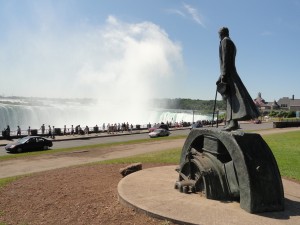 Niagara Falls has been attracting attention since it was first discovered, and for good reason. The Niagara River drains Lake Erie into Lake Ontario, resulting in some of the most beautiful falls in the world. Niagara Falls actually encompasses three separate waterfalls: American and Bridal Veil Falls on the American side of the border; Horseshoe Falls generally considered to be on the Canadian side (though the actual demarcation is in dispute due to erosion over the years).
Niagara Falls has been attracting attention since it was first discovered, and for good reason. The Niagara River drains Lake Erie into Lake Ontario, resulting in some of the most beautiful falls in the world. Niagara Falls actually encompasses three separate waterfalls: American and Bridal Veil Falls on the American side of the border; Horseshoe Falls generally considered to be on the Canadian side (though the actual demarcation is in dispute due to erosion over the years).
Taken together, and with a maximum vertical drop of more than 165 feet, the three falls provide the highest flow rate of any waterfall in the world. Horseshoe Falls alone is considered to be the most powerful waterfall in North America as measured by vertical height and rate of flow.
It is not surprising that people were interested in using the Falls to make their lives easier. As far back as 1759 a man by the name of Daniel Joncairs had dug a ditch above the Falls on the American side and used the flowing water to turn a waterwheel that powered a small sawmill. Almost 50 years later, in 1805, two brothers bought the rights to American Falls and used the old ditch to feed water to a gristmill and tannery. They then tried to build a larger canal leading to a reservoir on the cliffs, which would be allowed to flow to the gorge through “turbines connected by belts to industrial machinery.” None of those ideas worked out, and several companies went bankrupt trying to finish the project.
In 1853 the Niagara Falls Hydraulic Power & Manufacturing Company was chartered and by 1860 the company had begun construction of a 35-foot wide, 8-foot deep hydraulic canal to transport water from above the Falls to mill sites below the Falls. Delayed by the American Civil War, it would be take another 15 years before the canals were finished and the powerhouse was operational. Initially the plant ran only a single flour mill, but eventually a small generating station was producing enough electricity to light the first direct current lights in the village of Niagara Falls. Then the company went bankrupt.
In 1877, a successful tannery business owner, Jacob Schoellkopf, bought the canal and power rights at Niagara. While previous entrepreneurs had tried to harness the power of the falling water for mechanical energy (e.g., driving mill wheels), Schoellkopf realized the future was in generation of electrical energy. Modifying the existing systems, by 1881 Schoellkopf was providing power to Charles Brush to power “16 electric carbon arc lights” used to illuminate the Falls.
All of this was restricted by the limitations of direct current, which could not transmit more than a mile or two. Growing cities such as Buffalo, only 20 miles away, were unable to get electricity from the power of Niagara. While Schoellkopf’s efforts were a great step forward, something else needed to be done.
Enter Nikola Tesla and George Westinghouse
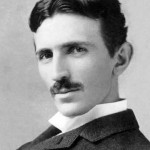 The Schoellkopf Company was eventually absorbed by the Niagara Falls Power Company run by New York financier, and former Edison Electric Company Board member, Edward Dean Adams. By 1889 a subsidiary called the Cataract Construction Corporation was incorporated and financed by heavyweights of the industrial world, including J. Pierpont Morgan, John Jacob Astor, William Vanderbilt, and the company’s president, Edward Dean Adams himself.
The Schoellkopf Company was eventually absorbed by the Niagara Falls Power Company run by New York financier, and former Edison Electric Company Board member, Edward Dean Adams. By 1889 a subsidiary called the Cataract Construction Corporation was incorporated and financed by heavyweights of the industrial world, including J. Pierpont Morgan, John Jacob Astor, William Vanderbilt, and the company’s president, Edward Dean Adams himself.
While Cataract began building the needed tunnels, Adams was researching the advantages and disadvantages of the well-known direct current vs the still untested alternating current. The company wanted to send electricity great distances, a major deficiency of direct current. Even the great Thomas Edison could not convince Cataract direct current would do the job, so in 1893 Adams opted for an alternating current system. The contract was awarded to the Westinghouse Electric and Manufacturing Company.
The key to Westinghouse’s win was none other than Nikola Tesla. In My Inventions, Tesla recalls that he first heard of Niagara Falls when still a boy in his backwoods school. Some mechanical models used by his instructors interested him in the idea of water turbines. After hearing a description of the great Niagara Falls, Tesla “pictured in my imagination a big wheel run by the Falls.” He proclaimed to his uncle that one day he would “go to America and carry out this scheme.”
Suddenly he had that chance. Tesla and Westinghouse had teamed up to win the contract to light up the Chicago World’s Fair – also known as the World Columbian Exposition – which opened May 1, 1893. The success of lighting up “the white city” was so impressive that Cataract quickly awarded the Niagara contract to Westinghouse. Tesla’s patented polyphase alternating current system would power the generators and bring electric lights and power to Buffalo. As somewhat of a consolation prize, Thomas Edison’s General Electric Company was hired to construct the long-distance transmission lines. Edison likely found this demeaning, not to mention ironic, given that his preferred direct current system could not be transmitted long distances and was the reason he lost the coveted Niagara contract in the first place. Edison would largely abandon direct current power plants after Niagara, following along on Tesla’s alternating current success.
Let there be energy
The concept behind gaining energy from the Falls is relatively simple. Potential energy is stored at the top of the Falls and as it drops the energy becomes kinetic. To tap it, some of the water that would go over the Falls is displaced through a long tunnel to turn a series of turbines, which converts the energy into mechanical energy, and that generates electricity.
Completed in 1895, Tesla’s polyphase generator could produce 15,000 horsepower, an unprecedented amount of power at that time. The Westinghouse Company would add seven more generating units to raise that level to 50,000 horsepower. On November 15, 1896, Westinghouse Electric, powered by nine key patents comprising Tesla’s polyphase system, began providing alternating current electricity to the city of Buffalo, twenty miles from the Falls. This achievement…
“…was the first alternating current electrical generating plant built on a large scale in the world. Its success encouraged the international creation of hydroelectric stations, now the most widely used form of renewable energy.”
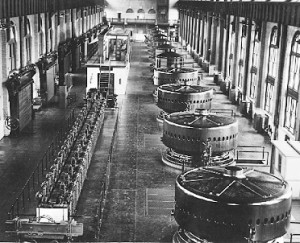 Tesla’s success changed the world, and soon many other power stations would be built at Niagara and elsewhere in the United States. Within ten years hydroelectric plants would provide 15 percent of all the electricity in the U.S.; by 1920 that had reached 25 percent.
Tesla’s success changed the world, and soon many other power stations would be built at Niagara and elsewhere in the United States. Within ten years hydroelectric plants would provide 15 percent of all the electricity in the U.S.; by 1920 that had reached 25 percent.
Tesla himself only made his first visit to the plant on July 19, 1896. It was his transformers that solved one of the most difficult problems in electrical science, but he was too busy to visit the site. In fact, on March 13, 1895, just as the generators using his technology were about to become operational at Niagara, his New York City laboratory burned to the ground. Rebuilding his equipment, and extracting the theoretical knowledge stored in his head, would keep him occupied for many months. When Tesla did finally find time, he noted that he was “delighted” with his visit to Niagara Falls. After touring “from top to bottom of the power plant,” he added, “You may say it is the greatest and the best, the most thoroughly equipped in the world.” And Tesla was right.
Tesla noted that in addition to Niagara there were many waterfalls that could be tapped for their natural energy. While most people react with awe upon seeing Niagara and the other great waterfalls, Tesla dispassionately focused on the mechanics of how their awesome power could be exploited for the generation of electricity.
“Great waterfalls exist in many inaccessible regions of the globe and new ones are being discovered, all of which will be eventually harnessed when the wireless transmission of energy is commercialized.”
Much credit has to be given to George Westinghouse and his willingness to take the chance on new technologies. Tesla himself was positively effusive about Westinghouse. Thomas Edison, on the other hand, tried to discredit alternating current; he even suggested the wires might be better put to use drying laundry. Another renowned electrician of the time, Charles Proteus Steinmetz, “had a very poor opinion” of Tesla’s induction motor. To Tesla, George Westinghouse was “a genius of the first degree…a man truly great, of phenomenal powers,” and perhaps even more importantly, “undertook to wage a war [based on Tesla’s alternating current technology] against overwhelming odds.” Together, Tesla and Westinghouse’s alternating current won “the war of the currents” over Edison’s direct current. The world still benefits today from that victory each and every time we use the electricity transported long distances to our homes and businesses.
To honor his role in bringing hydroelectric power to Niagara Falls, the main power station would be named after Edward Dean Adams in 1927. Adams would make the cover of Time magazine on May 27, 1929. Nikola Tesla would do the same just over two years later, on July 20, 1931, in celebration of his 75th birthday and a lifetime of achievement. Tesla’s inventions had not only revolutionized electrical generation, they did what he always wanted to do – “harness the forces of nature for the service of mankind.”
[The above is adapted from my e-book, Nikola Tesla: Renewable Energy Ahead of Its Time, available on Amazon.com.]
Read other posts on Nikola Tesla here on Science Traveler.
David J. Kent is the author of Lincoln: The Man Who Saved America, now available. His previous books include Tesla: The Wizard of Electricity and Edison: The Inventor of the Modern World (both Fall River Press). He has also written two e-books: Nikola Tesla: Renewable Energy Ahead of Its Time and Abraham Lincoln and Nikola Tesla: Connected by Fate.
Check out my Goodreads author page. While you’re at it, “Like” my Facebook author page for more updates!
Follow me by subscribing by email on the home page. Share with your friends using the buttons below.



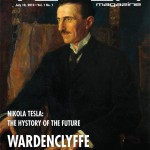 Wardenclyffe. The laboratory, with its iconic tower, has once again reached the almost mythical proportions it once attracted when Nikola Tesla was first erecting it. The recent purchase of the property by the Tesla Science Center at Wardenclyffe ensures that Tesla’s name will touch a new generation of students eager to know about this almost forgotten inventor.
Wardenclyffe. The laboratory, with its iconic tower, has once again reached the almost mythical proportions it once attracted when Nikola Tesla was first erecting it. The recent purchase of the property by the Tesla Science Center at Wardenclyffe ensures that Tesla’s name will touch a new generation of students eager to know about this almost forgotten inventor.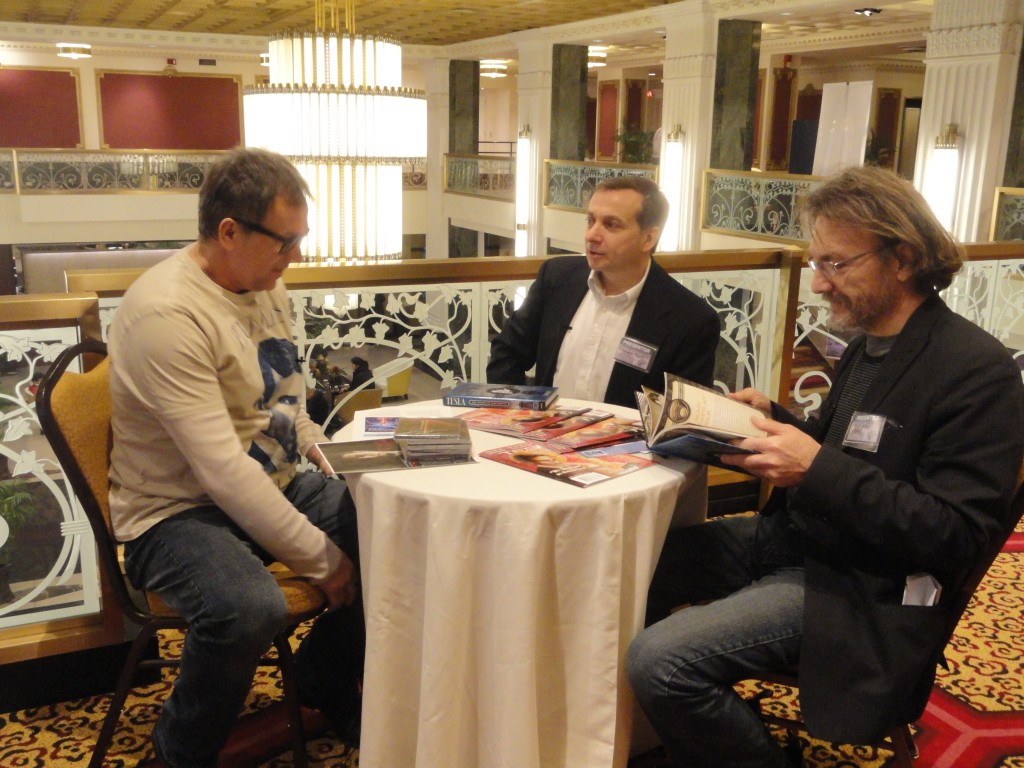
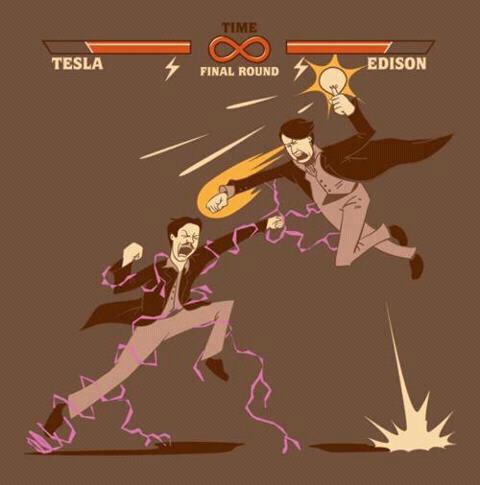
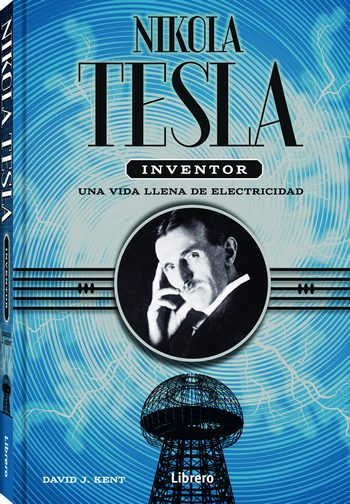


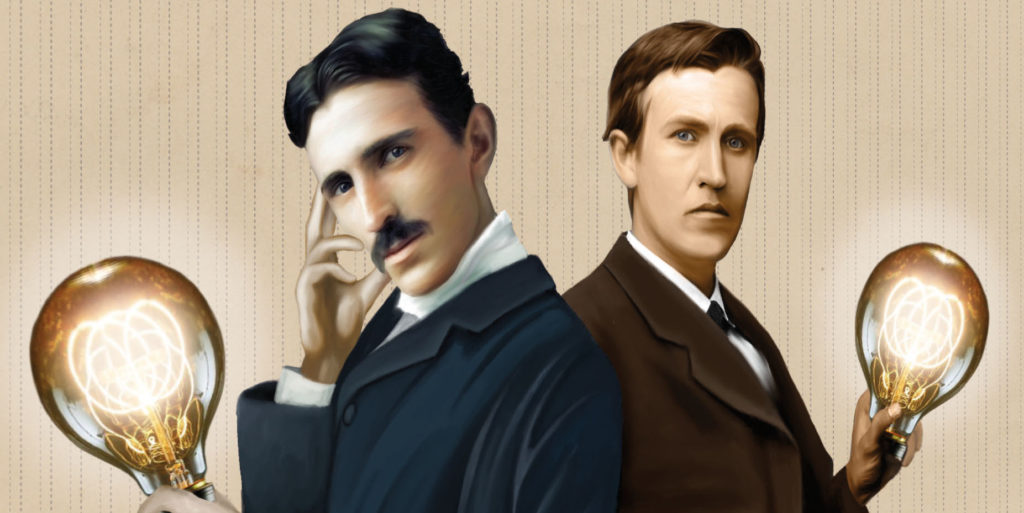



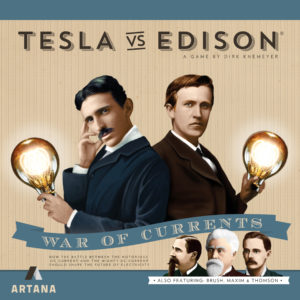
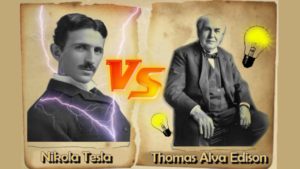
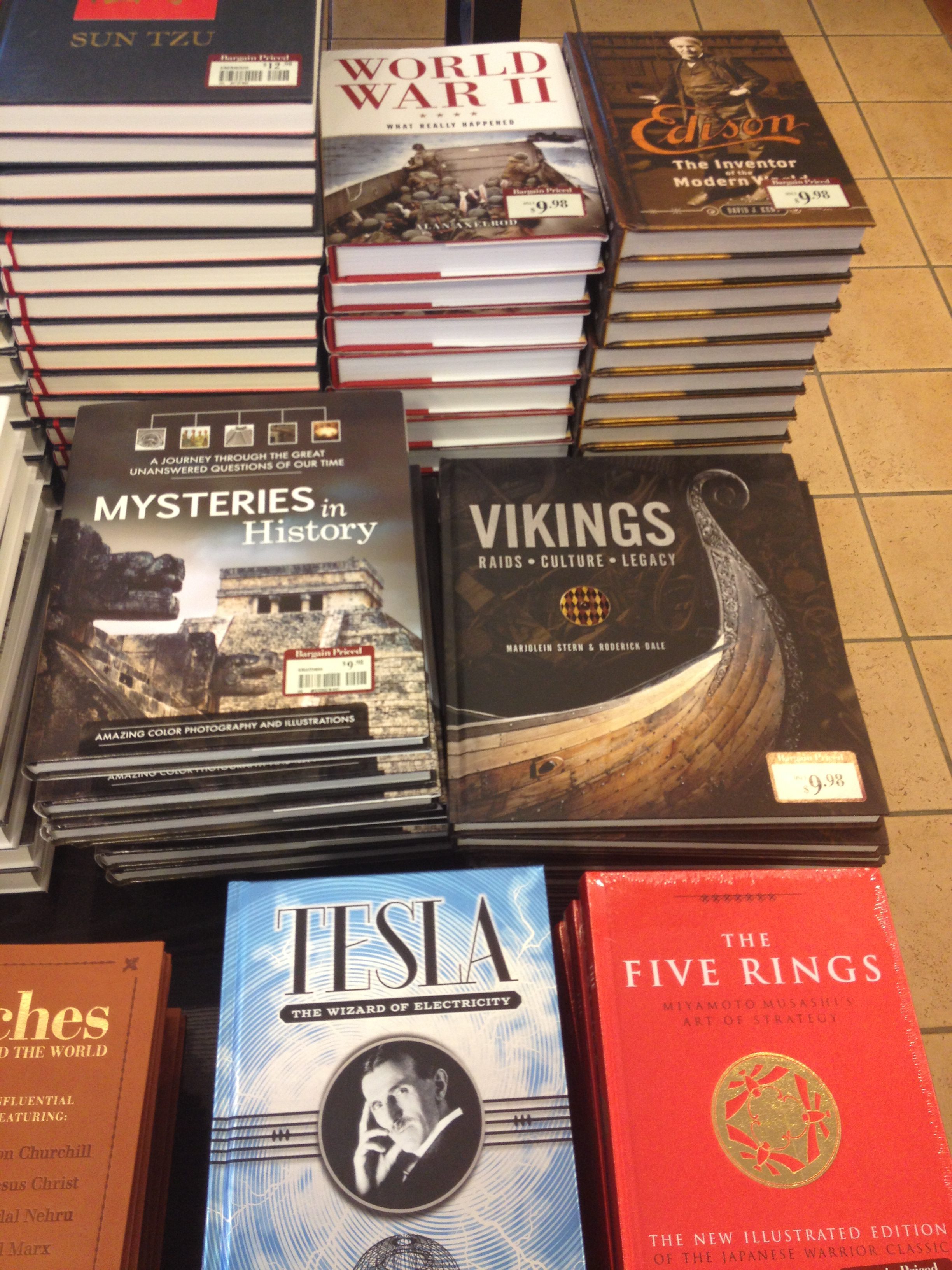
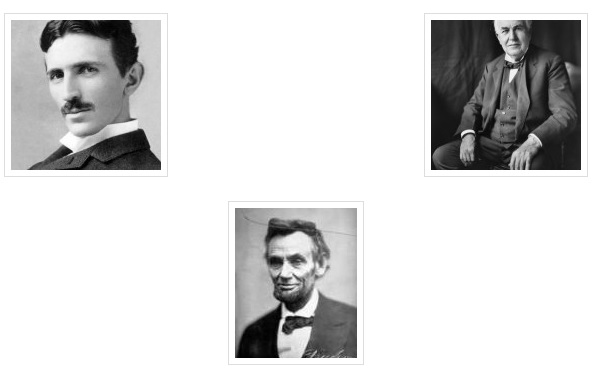
 Nikola Tesla was a sometimes eccentric genius who changed the world. Thomas Edison was a sometimes eccentric genius who changed the world. Wait, can both of those be true? Yes, and here’s why.
Nikola Tesla was a sometimes eccentric genius who changed the world. Thomas Edison was a sometimes eccentric genius who changed the world. Wait, can both of those be true? Yes, and here’s why.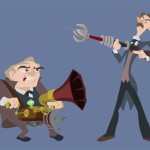 Interestingly, both had a connection to science fiction. Tesla’s friend
Interestingly, both had a connection to science fiction. Tesla’s friend 